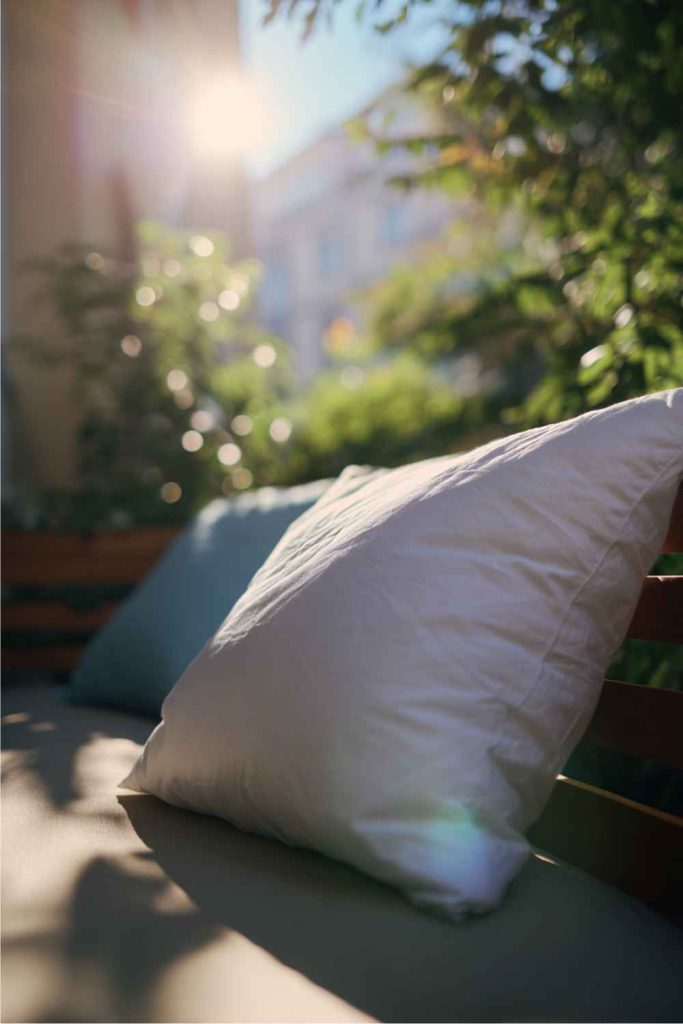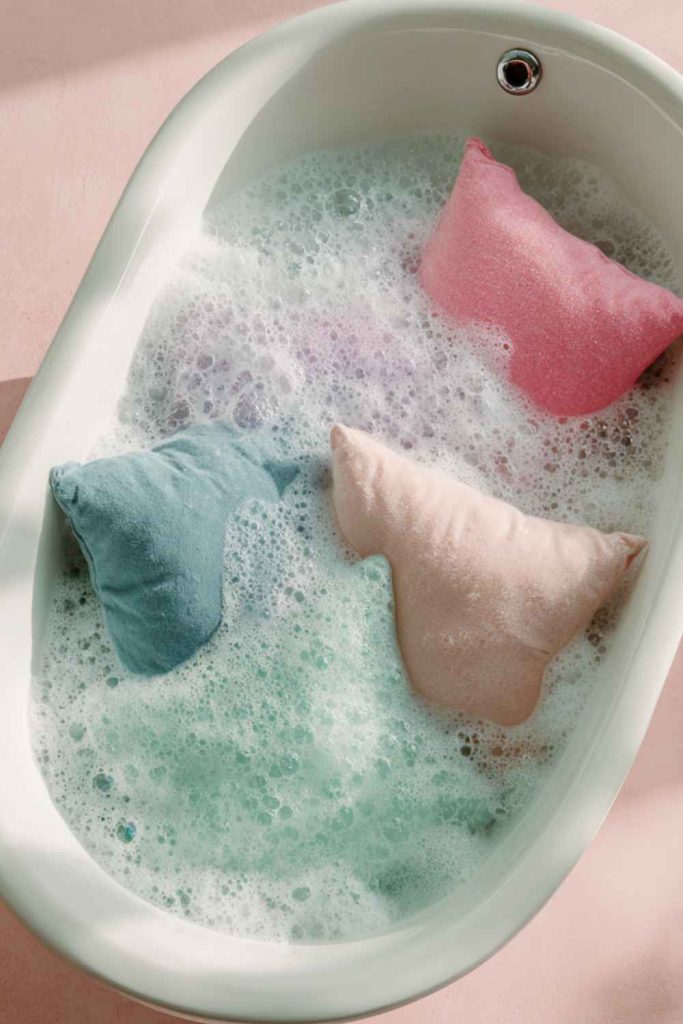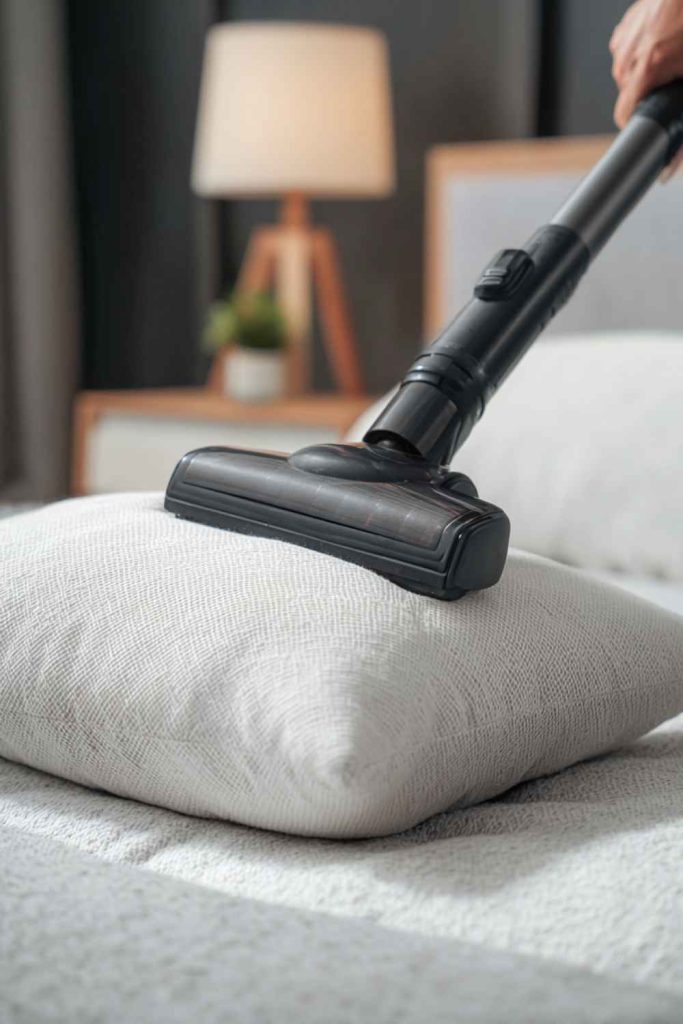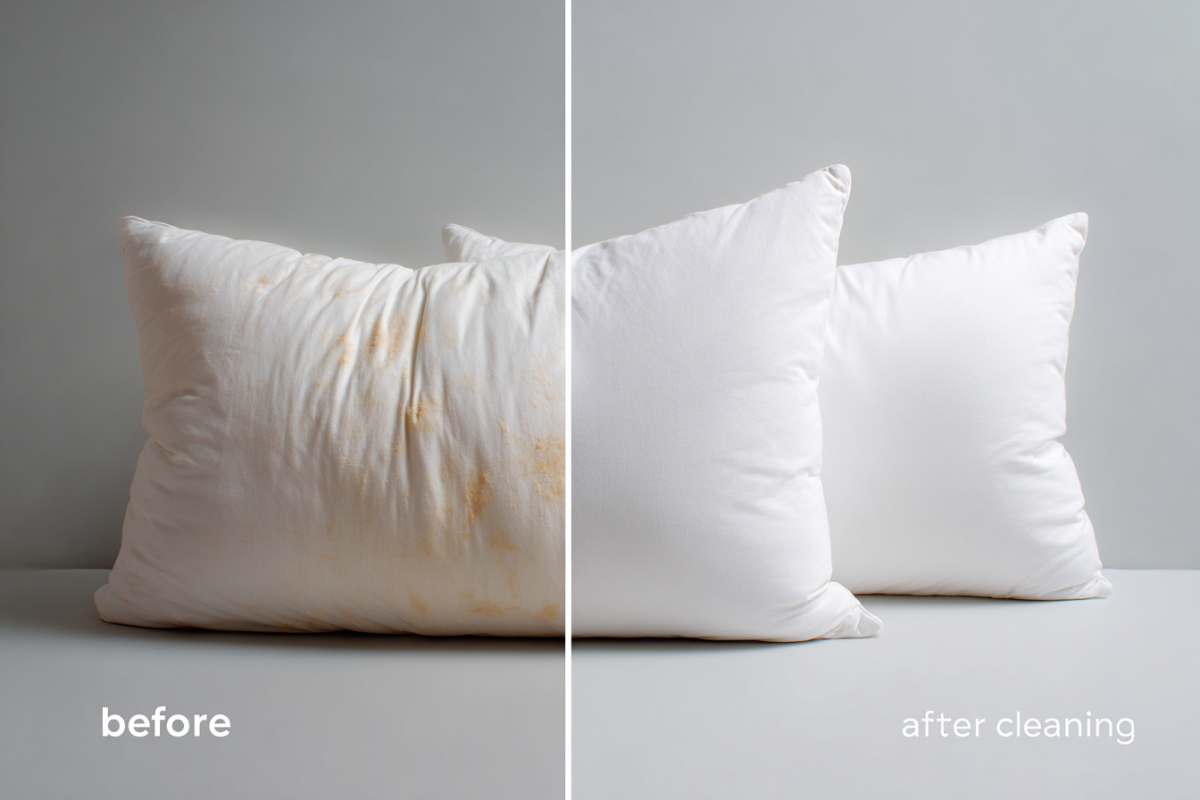How To Wash Pillows (Without Wrecking Them)
If you’re anything like most of us, you wash your sheets on autopilot and then… forget the pillows. Meanwhile, those workhorses collect sweat, oils, makeup residue, dead skin, and the microscopic freeloaders that love all of the above. Clean pillows don’t just feel better; they matter for skin health, allergies, and just plain freshness. You know what? This is one of those home-care shifts that pays you back nightly.
Let me explain how to wash every kind of pillow, down, feather, polyester, memory foam, and the tricky decorative ones, plus how often to clean them, how to dry them fully (mildew, we see you), and when it’s time to say goodbye.
How often should you really wash them?
Every three to six months is a safe, expert-backed rhythm for machine-washable bed pillows. If you run hot, have pets in bed, or deal with allergies, aim for the shorter end of that range. Throw pillows can go longer, about once a year, because they’re not hugged by your face all night.
A quick rule-of-thumb you’ll actually remember:
- Bed pillows: seasonally (about every 3 months) if you’re sensitive, otherwise every 3–6 months.
- Throw/decorative: yearly or per label.
And yes, cleaning matters. Pillows can harbor dust mites, bacteria, and fungi inside the fill, not just on the surface. If you have allergy symptoms, regular washing helps.
First thing: identify your pillow type
That little care label is your best friend. It tells you what the fill is and what it can tolerate.
- Usually machine-washable: cotton, polyester/fiberfill, feather, down. These are typically fine on a gentle cycle, as long as you follow the label.
- Handle differently: memory foam and latex (and sometimes gel, buckwheat hulls, wool, or “dry clean only” decorative fills). Foam especially dislikes machine agitation and can tear or trap water. These get hand-cleaning and careful drying.
Small note on memory foam: manufacturers often design removable, machine-washable covers even when the foam core itself should never see a washer. Keep that cover on your normal laundry loop and spot-clean the foam.
Machine-washing pillows (for the pillows that can)
Here’s the straightforward, low-drama method experts agree on.

What you’ll need
- Mild, liquid laundry detergent (go light; too many suds = residue)
- ½ cup white vinegar (odor neutralizer and freshener)
- Dryer balls or clean tennis balls (loft savers)
Vinegar? Yep. It’s a budget deodorizer and helps rinse away lingering detergent. Use it in the dispenser, not poured on fabric.
Step-by-step
- Strip it: Remove pillowcases and any zippered protectors.
- Pre-treat: Touch a little detergent (or stain remover you trust) to makeup, drool marks, or sunscreen rings along the edge.
- Load for balance: Wash two pillows at a time. Single pillows tend to pinball and won’t rinse evenly.
- Cycle & temp: Choose gentle/delicate with warm or cool water. Many guides prefer cool to reduce clumping in down; warm is also commonly recommended for down/fiberfill with an extra rinse to clear detergent. (Follow your label first.)
- Detergent & vinegar: Add a small dose of detergent + ½ cup white vinegar to the dispenser.
- Extra rinse: If your machine allows, add an extra cold-water rinse to chase suds out of the fill.
- Gentle squeeze: When the cycle ends, gently press out excess water, don’t wring.
Drying that actually finishes the job
Moisture trapped in the center breeds musty odors. Dry completely.
- Low heat tumble with dryer balls or tennis balls, pausing a couple of times to hand-fluff and break up clumps. Keep going until the center of the pillow feels bone-dry.
- If you can, add an extra spin in the washer before drying to cut dry time.
- Still worried? Finish with an hour of air-dry in the sun, flip halfway, especially for down. Sun’s warmth + airflow help finish the core.
Top-loader with an agitator? Put pillows vertically to minimize beating from the spindle. If your machine is small, do one pillow plus a couple of towels for balance, then repeat with the second.

Hand-washing (for foam, latex, or delicate fills)
Some pillows shouldn’t be machine-washed. Foam can tear when agitated and can trap water in tiny pockets, which slows drying and invites odor.
What you’ll need
- Clean basin or bathtub
- Mild detergent
- Optional: ½ cup white vinegar for deodorizing
- Soft brush or cloth
Step-by-step
- Uncover: Remove pillowcases and washable covers (wash those in the machine).
- Soak: Fill a basin with lukewarm water, add a small amount of detergent (and vinegar if the pillow is safe for it).
- Gentle press: Submerge the pillow (unless it’s foam, see below) and press water through the fill; lightly brush stained areas.
- Rinse well: Drain, refill with clean water, and repeat until no suds remain.
- No twisting: Press out water; do not wring. Lay flat on towels and reshape. Rotate during drying.
Memory foam or solid latex: Skip submerging. Vacuum the surface with an upholstery attachment to remove dust, spot-clean stains with a barely damp cloth + mild detergent, then air-dry flat with good ventilation (a fan helps). Keep foam cores away from the dryer.

Odor fixes that work
Two inexpensive standbys, both safe for most materials:
- Sun + fresh air: A few hours of direct sunlight can clear lingering damp smells; flip to expose all sides.
- Baking soda: Sprinkle generously, wait a few hours (or overnight), then shake off and vacuum. Great between washes.
Between-wash habits that keep pillows fresher
- Use zippered protectors under your pillowcases. They catch sweat and oils so the fill doesn’t have to. Wash protectors regularly.
- Air and fluff weekly while you change sheets; quick shakes help redistribute fill and release moisture.
- Pet hair magnet? Keep pets off the bed if you can (or throw a washable blanket over your pillows during the day). Also: no snacking in bed, crumbs invite bacteria and odors.
- Sick days: Swap pillowcases more often to avoid re-exposure.
Little digression for the skincare-minded: cleaner pillows often mean calmer cheeks. Oils and product residue on fabric can transfer back to skin. That nightly contact adds up.
A quick cheat sheet by fill type
Down/Feather
- Machine-washable (label permitting) on gentle; wash two at once; extra rinse helps. Dry low with dryer balls; expect multiple cycles. Finish with air if needed.
Polyester/Fiberfill
- Also machine-washable on gentle. Use less detergent than you think and an extra rinse. Dry low; pause to hand-fluff.
Memory Foam/Solid Latex
- No machine wash for the core. Vacuum + spot-clean; air-dry flat with good airflow. Covers are often washable.
Buckwheat, Wool, or “Dry Clean Only” Decoratives
- Follow the care label. Often spot-clean only; many have removable covers to launder. (For wool fills, avoid agitation and heat; for buckwheat hulls, never soak the hulls.)
Troubleshooting common headaches
“They still smell musty.”
Run a second spin to force out more water; dry longer on low with dryer balls; finish with sun time. Sprinkle with baking soda, wait a few hours, then vacuum.
“The fill clumped.”
Pause the dryer, break up clumps by hand, add two dryer balls/tennis balls, and keep going on low. For down, knead gently like bread dough to redistribute.
“I only have a small top-loader with an agitator.”
Wash two pillows vertically or one pillow with a couple of towels for balance, then repeat with the second pillow.
“I’m nervous about foam.”
That’s reasonable. Keep water off the foam core; clean the cover instead, and spot-clean the foam sparingly. Dry flat with airflow.
When to replace pillows (even if you wash faithfully)
Daily-use pillows typically need replacing about every 1½–2 years. Signs it’s time: the pillow stays flat, smells even after washing, or leaves you waking with a cranky neck or stuffy nose. Some materials last longer with great care, but if support is gone, so is good sleep.
The squeeze test: Fold the pillow in half. If it doesn’t spring back, that’s your cue to start shopping.
Step-by-step recipes you can screenshot
Classic washer method (down or polyester)
- Load two pillows.
- Gentle cycle; warm or cool water per label.
- Small amount of liquid detergent + ½ cup white vinegar in dispenser.
- Extra rinse if available.
- Gently press water out.
- Dryer on low with dryer balls/tennis balls; pause to fluff; finish fully dry.
Foam-friendly refresh
- Remove and machine-wash the cover.
- Vacuum foam with upholstery tool.
- Spot-clean stains (dab, don’t soak).
- Air-dry flat with a fan until completely dry.
Odor rescue (any type)
- A sunny window or patio: 2–4 hours, flipping halfway.
- Baking soda sprinkle → wait a few hours → shake off → vacuum.
Seasonal notes (because life changes with the weather)
- Summer sweat season: shorten the wash cadence; lean on protectors and weekly airing.
- Winter dryness: static clinging to dust? A quick fluff in the dryer on air-only with dryer balls helps re-loft without heat.
- Pollen waves: allergies acting up? Wash cases more often and bump pillows to the 3-month schedule until the season passes.

Frequently asked questions
Can I wash polyester pillows?
Yes, most polyester/fiberfill pillows are machine-washable. Use gentle cycle, a small amount of detergent, and dry low with pauses to fluff. Always follow the tag.
How many pillows can go in the washer at once?
Usually two for balance. Larger drums can sometimes manage three, but don’t overcrowd,water needs to flow through the fill.
What’s the best heat setting for drying?
Low. High heat can scorch fibers or melt synthetics, and it can bake in clumps. Use dryer balls or tennis balls and check frequently.
How can I remove odors without washing?
Baking soda + time, then vacuum. Sun also helps, even in cool weather.
Is vinegar really better than fabric softener here?
For pillows, yes, vinegar neutralizes odor and helps rinse; liquid softener can coat fill and reduce loft. Add vinegar in the dispenser; skip softener.
Top-loader with an agitator, am I stuck?
Not at all. Load vertically and keep it balanced. Go gentle, and consider an extra rinse.
Can I machine-wash shredded memory foam?
Treat foam like a soufflé, gentle and dry. Most sources advise no machine wash for foam cores; they can tear and trap water. Wash the cover, then vacuum/spot-clean the foam. When in doubt, follow the manufacturer.
The (pleasant) bottom line
Regular, careful washes keep pillows fluffy, fresher, and kinder to your skin. Identify the fill. Choose the right method. Dry thoroughly. Then keep them happier longer with protectors and small, weekly habits. Wash on a sensible schedule and you’ll sleep easier, literally.


